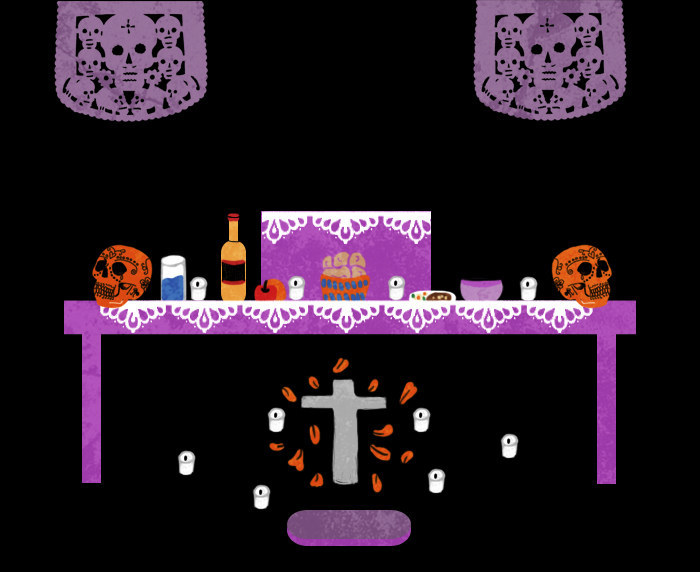

Made from sugar, water and meringue, the skulls offer a sweet treat to both the living and the dead. Many will light extra candles to represent forgotten souls or people whose families are unable to celebrate them.Ībove all, the photos of loved ones and foods or items they treasured are placed on the alters so that the living can continue to remember who their loved one were and what they stood for.Ĭalaveras, or sugar skulls, have become a widely-recognized symbol of Día de los Muertos. They also represent light, hope and faith. The bread is representative of the harvest and our connection to the Earth.Ĭandles are a common element on grave sites and alters, lit to help guide souls back home. Some families put out bottles of tequila, a representation of the Mexican influence on the tradition and a reminder that Día de los Muertos is a celebration.įamilies often bake Pan Muerto or “bread of the dead” and leave it on the Ofrenda for the souls to enjoy. Ofrendas can be made at the grave site or in homes, and are often infused with the four elements of nature: earth, wind, water and fire – a nod to traditional roots in Mexican and Indigenous history.ĭelicately cut, brightly colored tissue paper that dance on the breeze, the Papel Picado reflects the movement of the wind and are said to help the spirits travel between the land of the living and world of the dead.Ĭontainers of water represent purity and are prepared for the deceased to quench their thirst after the long journey home. These customs were not meant to fear death but to embrace it as we embrace life and more importantly remembering and honoring the dead.” “An important aspect of the celebration involves visits to graves sites to clean and decorate them.

“The celebration revolves around the tradition of remembrance or honoring lost love ones,” Romero said. Many of the artists create Ofrendas (offerings or alters) commemorating the deceased and showcasing their favorite foods. Romero oversees the South Broadway Cultural Center, which puts on a Día de los Muertos art exhibition every year, showcasing local artists and their contributions to the tradition. “Día de los Muertos is about honoring family and the deceased, keeping their memories alive,” – Augustine Romero, South Broadway Cultural Center. 2), the spirits of those departed come back to visit the living – not as ghosts, but as family and community members returning to check on their loved ones. The basic belief is that on the night between All Saints Day (Nov. What was once a month long observance, is now an annual nightlong celebration. With the arrival of the Spanish the tradition blossomed into including Christian ideals in respect to the use of saints and other Christian objects,” explained Augustine Romero, Gallery Curator for the South Broadway Cultural Center in Albuquerque.

“This tradition originated in Mexico was and practiced among indigenous peoples.

It is been traced back to Aztec religious beliefs and the goddess Mictecacihuatl – “Lady of the Dead.” The tradition further developed along religious timelines when the Spanish introduced Roman Catholicism to Mexico, and is now celebrated across Latin America and in various ways around the world. Local artist Jeremy Montoya's work on display at a past South Broadway Cultural Center Dia de los Muertos celebration.ĭía de los Muertos (Spanish for Day of the Dead) is a tradition that revolves around life and death, family and remembrance.


 0 kommentar(er)
0 kommentar(er)
